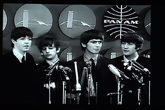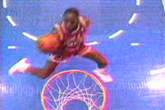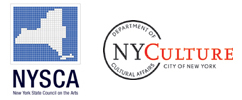    |
EAI SUMMER VIDEO SCREENING CLEAN CUT Cory Arcangel Michael Bell-Smith Takeshi Murata Karthik Pandian Radical Software Group (RSG) Matt Sheridan Smith Wednesday, August 13, 2008 6:30 pm Electronic Arts Intermix (EAI) 535 West 22nd Street, 5th Floor New York, NY 10011 www.eai.org Admission free ___________________________________ The re-edit and the remix have become increasingly important strategies for artists working with appropriated moving images. In the era of YouTube and affordable, user-friendly video editing software, a minimalist approach to reworking appropriated material has emerged. What is the most economical way to make something new from something old? Eschewing collage, the artists in this program choose to make works by refashioning a single piece of found video or film, such as a Hollywood action movie, a '70s sitcom, or a low-resolution video clip. Though recalling Internet fan edits and exercises encountered in film school editing classes, these remixes and re-edits by artists are driven by conceptual or formal investigations. Reduction is the key to these works. The artists take existing footage and apply a single, often rigorous strategy to it. Some employ reductive editing, carving out surprising new meanings or narratives. Others manipulate duration or structure, stretching time or compressing it to draw out latent themes. This minimalist approach to altering appropriated media has recently proliferated. New digital tools make finding, appropriating, and re-editing media fast, easy, and accessible. These artists take a similar approach, employing an economy of means to create new forms of cultural critique and media intervention. ___________________________________ In Michael Bell-Smith's structuralist re-edit of Eisenstein's iconic 1925 film The Battleship Potemkin, Bell-Smith replaces the film's original pacing with the "dumb, visceral, metric montage favored by dance visuals and music videos," mimicking processes at work in popular culture. Also investigating an editing strategy from pop music, Karthik Pandian applies the logic of "Screwed" music (deliberately slowed-down hip-hop) to video, manipulating the speed and duration of Internet footage of Michael Jordan. Takeshi Murata's video also experiments with changes in duration. Digitally slowed by Murata, a clip from the '70s sitcom, Three's Company, becomes a strange and hypnotic flow of deteriorating, artificial movements occurring in unnatural time. Two short works by Cory Arcangel mimic fan-edits, pursuing obsessions with rock stars into the realm of dark comedy. In the earlier work, Arcangel re-edits a recording of a concert by Simon and Garfunkel in Central Park, keeping only the shots where Garfunkel has his hands in his pockets. The more recent piece, I don't want to spoil the party, is a dark, minimalist intervention in footage of the Beatles giving a press conference in the '60s. In Matt Sheridan Smith's reductive meditation on Robert Bresson's L'Argent, all that remains are shots of characters opening, closing, and moving through doors. Through this motif, Smith transforms narrative cinema into formalist video, while also creating a metaphor for the shutter in Bresson's camera opening and closing to capture light. Finally, Radical Software Group (RSG)'s timely and chilling re-edit of Black Hawk Down, a blockbuster portrayal of a 1993 U.S. raid in Somalia, removes all the shots containing white characters. The result is a 22-minute conceptual investigation of race, representation, and ideology. Programmed by Josh Kline. ___________________________________ About EAI Founded in 1971, Electronic Arts Intermix (EAI) is one of the world's leading nonprofit resources for video art and interactive media. EAI's core program is the international distribution of a major collection of new and historical media works by artists. EAI's activities include a preservation program, viewing access, educational services, online resources, and public programs such as exhibitions and lectures. The Online Catalogue provides a comprehensive resource on the 175 artists and 3,000 works in the EAI collection, including extensive research materials. www.eai.org Please visit EAI's new project, The Online Resource Guide for Exhibiting, Collecting & Preserving Media Art, a comprehensive source for information on single-channel video, computer-based art, and media installation: http://resourceguide.eai.org Electronic Arts Intermix 535 West 22nd Street, 5th Floor New York, NY 10011 (212) 337-0680 tel (212) 337-0679 fax info@eai.org ___________________________________  |